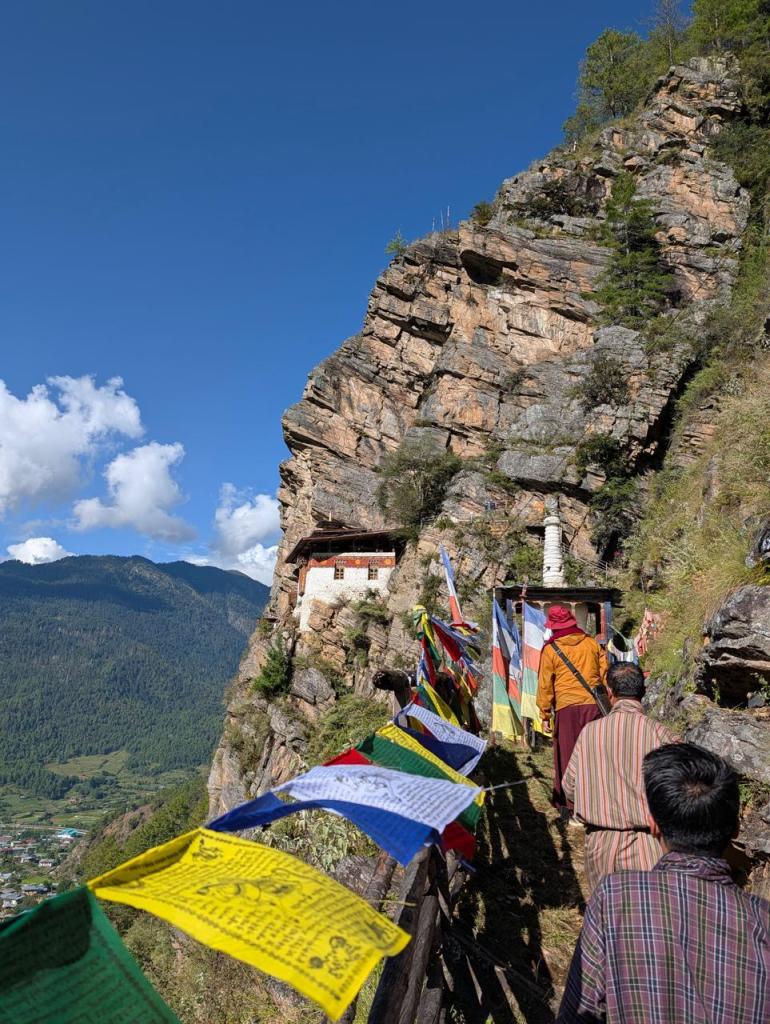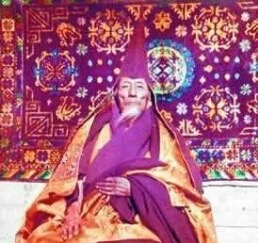Day 7 & 8
Tamshing Lhakhang (Temple of the good message), established in 1501 by Pema Lingpa and is the most important Nyingmap temple in Bhutan.



Pema Lingpa had some visions which then people started believing in him as a potentially great master. There was a village chief who doubted him and challenged him to show that he was really a great realiser.
Pema Lingpa agreed saying if it really is true he will go into this lake with a burning lamp and if he comes out with it burning still then it may well be true if he doesn’t then it is obviously not true. He then jumped into this small ‘lake’ with a burning candle and he disappeared for a full hour and everyone thought that he was now probably dead. However, after this hour he then arose again from this ‘lake’ still alive and the candle was still alight and with him he also had another rock which he claimed was another treasure. The village chief challenged him again and he took out his long knife and smashed the rock and within the rock there was a Buddha statue. However, it was apparently, not the right time to real reveal this treasure and so they said as a result of this it was said that Pema Lingpa would live a shorter life.


In all the temples we weren’t allowed to take photos.



Day 9: visit to Tiger’s nest










Tiger’s Nest,
officially known as Paro Taktsang, is one of Bhutan’s most iconic landmarks, located in the upper Paro Valley at an elevation of approximately 3,120 meters above sea level. The monastery is built around a cave where Guru Rinpoche, is said to have meditated in the 8th century. The name “Tiger’s Nest” comes from the legend that he flew to this location on the back of a tigress.
Day 10: Dumiseg Lhakhang



Chele La Pass on the way to Haa Valley


Day 11

Lhakhang Karpo White Monastery Haa Valley Lhakhang Karpo, also known as the White Temple, is a significant monastic site in Haa Valley, Bhutan. Founded in the 7th century by King Songtsen Gampo, it is part of the 108 temples built to subdue a demoness disrupting the spread of Buddhism in the Himalayan region. The temple is dedicated to the Avalokiteshvara, the Bodhisattva of Compassion.

Juney drak Bjungeydra, which is dedicated to Guru Rinpoche, is situated at 2930 meters above the sea level. The local belief is that Guru Rinpoche visited this place and subdued a demon by taking out one of its eyes and one fang. It is believed that the eye and the fang were placed on the cliff and the marks can be seen even today. One can see different naturally formed sacred shapes on the rocks, such as forms of Mahakala, golden and silver bowls, and syllable ‘Ah’. The visitors to this sacred place can also see frowning face of the Guardian of the Gate (sgo srung khro zhal), a stupa of natural rock and the yoni of Dakini. Bjungeydra Nye also houses the right footprint of Mache Lhabdron (1055-1132).




Drakarpo Kora (reputedly 8th century onward) The Drakarpo Kora is a holy place located on a cliffside in southern Paro, at about 2,650 meters elevation. The main lhakhang is built on a natural rock outcropping where Guru Rinpoche is said to have meditated in the 8th century. There are several dozen “sacred sites” located here, including various footprints (of Guru Rinpoche, Drukpa Kunley, Ngawang Chogyal), several meditation cliffs, and even “three lamps that can burn for an aeon while the teachings of Guru Rinpoche remain” (Thinley, p. 42).




